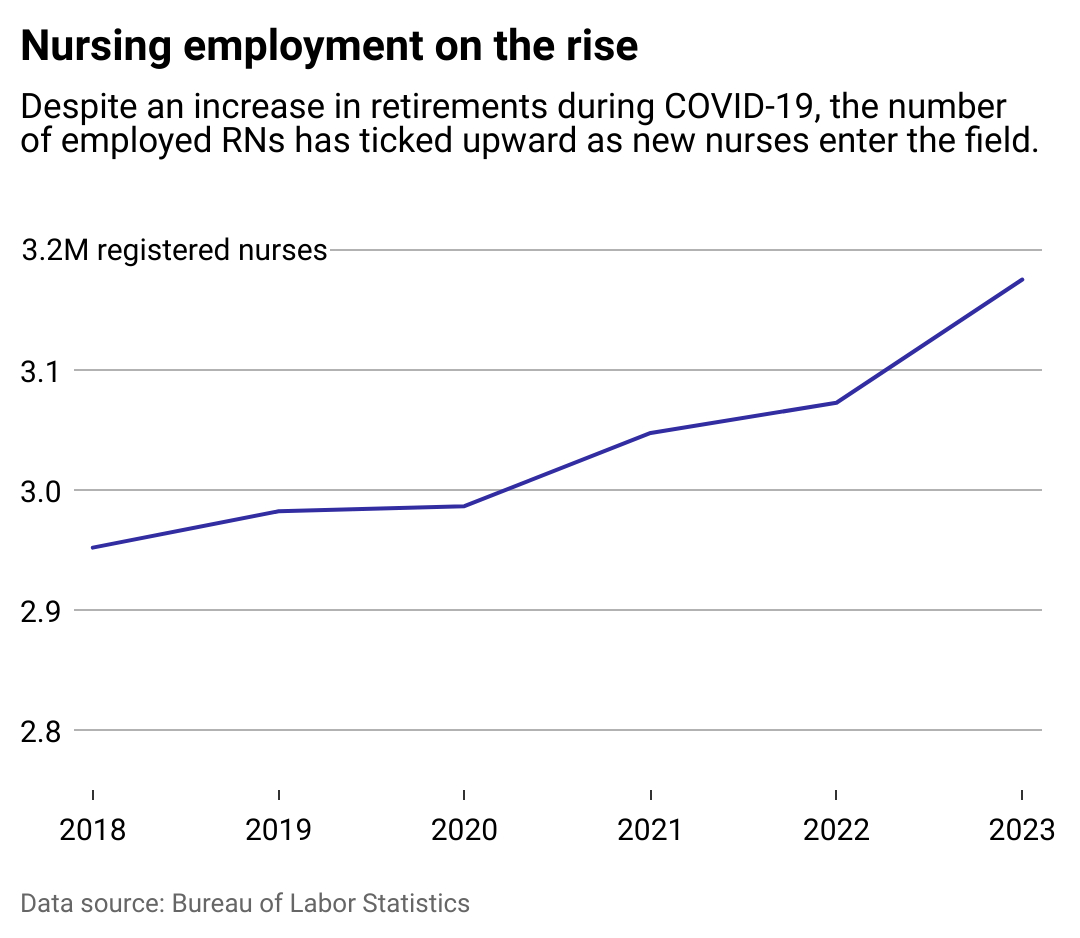How the new generation of younger nurses is impacting the future of care
Vivian Health examined the impact of the widespread nurse retirement and how nursing industry demographics have changed in the last five years.
The nursing industry lost at least 130,000 nurses between 2020 and 2022 as the COVID-19 pandemic demanded more working hours, causing emotional drain, according to the 2022 National Nursing Workforce Study. However, that exodus was largely offset by new nurses entering the field, many of whom were inspired by the pandemic to effect positive change.
With the continued rise of burnout and fewer mentors in the workplace, government agencies—along with private companies and nonprofits—have been investing millions in recruiting and retaining experienced employees in the nursing industry.
Vivian Health used data from the Bureau of Labor Statistics and the most recent National Nursing Workforce Study to examine how widespread nurse retirement is shaping the nursing industry. The data also illustrates how demographics have changed in the last five years.

While some new nurses enter the field through a career change, overall, nurses have become younger. According to the study, the median age of registered nurses was 46 in 2022, falling from 52 in 2020. Younger nurses also make up a larger share of the workforce. The portion of registered nurses younger than 29 grew, while the share of nurses older than 55 shrank from about two out of five nurses of the workforce to less than a third.

A shortage of nurses could have dire implications for patients, including increased readmission rates, staffing shortages, and higher morbidity rates. However, despite chatter about nurse scarcity, the number of registered nurses in the workforce has increased steadily over the past five years, according to data from the Department of Labor.
Widespread retirements have impacted some sectors more than others. A March 2024 survey from the American Health Care Association found that 99% of nursing homes have open positions; among those, about 9 in 10 seek to hire for registered nursing roles. What’s more, three-quarters say their workforce is down from prepandemic levels.
Demand for nurses is only expected to grow over the next decade as Americans grow older and need long-term care.
The Health Department estimates a shortage of 63,720 full-time nurses in 2030. However, as more nurses graduate and enter the workforce, the department projects an oversupply of registered nurses by 2035.
